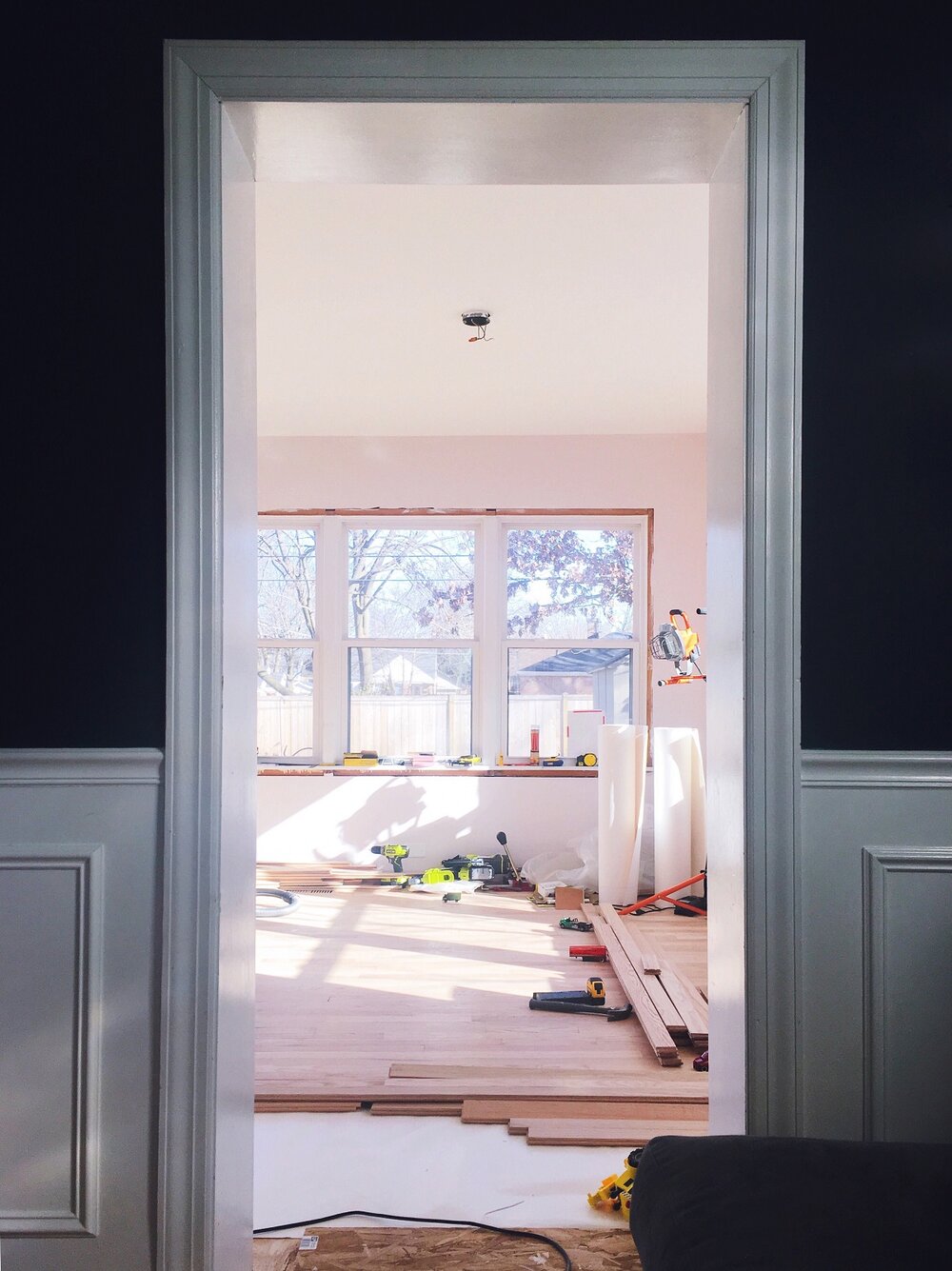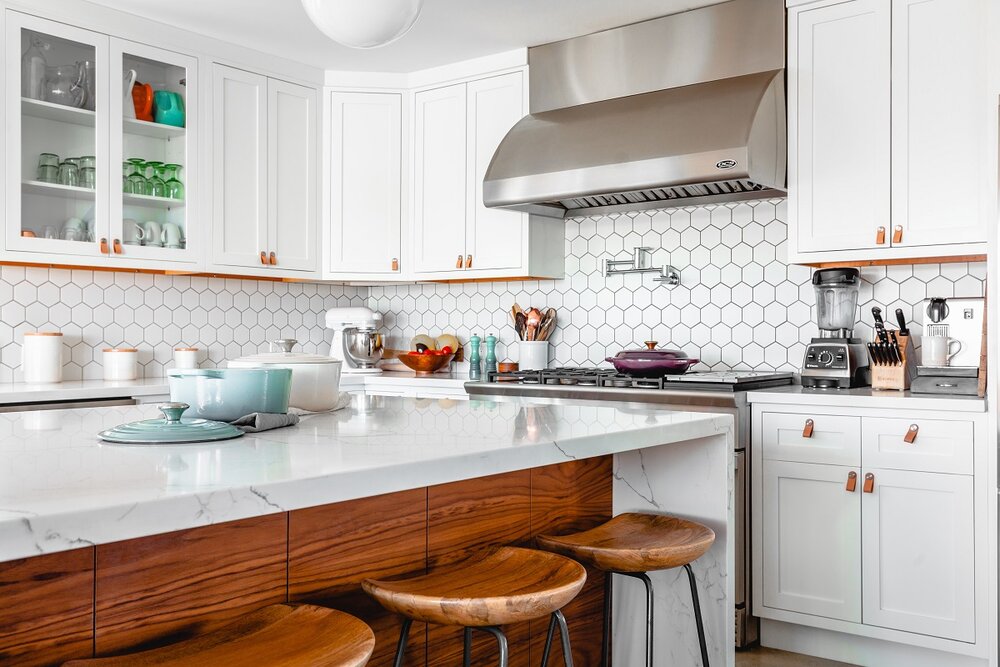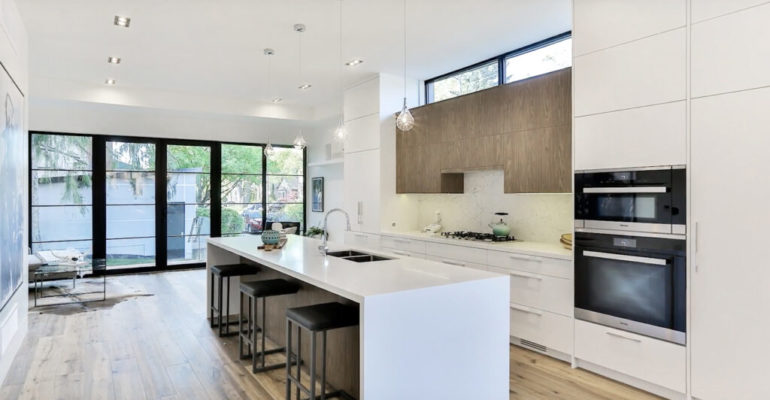Cheap Home Improvement Products That Make A Big Impact
A home renovation project may sound like an expensive undertaking on the surface. However, you might be surprised to find that there are many cheap home improvement products on Amazon that’ll make a huge impact on your house’s ambiance (without breaking the bank). Here’s a list of must-have items that could be extremely helpful while sprucing up your house.
We’ve included colorful under-cabinet string lights that could make all the difference in the world when it comes to the look and feel of your kitchen. We even added silicone caulk that can help improve the appearance of your tile and bath area, along with wood repair markers that could mend scratched furniture. There are even sink plungers and universal socket wrenches that can come in handy when something breaks, making home maintenance issues a breeze to handle on your own.
So whether you’re looking to DIY or call in a handy person for help, these products are sure to help you upgrade your living space without having to spending a fortune. Keep scrolling to take a look at cheap home improvement items that you’re going to absolutely love.
Unlike other magnetic screen doors, this one features weights at the bottom so that it doesn’t blow open when it’s windy outside. The magnets running along the center allow you to walk through it without using your hands, and there are zero tools required for installation.
Put these string lights under your cabinets or behind your television for some chic lighting. Each order comes with a remote that you can control them from the couch without having to get up, and there are 16 LED colors to choose from when setting the mood: red, blue, purple, green, and more.

THINGS YOU NEED TO KNOW ABOUT HOME RENOVATION
Depending on the size and scale of your home renovation project, you may need to get building permits from the city or county government before you can begin remodeling.
Smaller projects like painting your home or installing new carpet or flooring generally do not require building permits. However, building permits are usually required for more full-scale remodeling projects
Figure out your home renovation budget
Another important aspect of home renovation is figuring out your renovation budget. Take some time to assess your finances, and be honest with yourself about what you can realistically spend.
Once you know your home renovation budget, you can strategize which tasks you can afford to begin now and which remodeling projects you’ll need to save up for. Kitchen and bathroom renovations are some of the most common home projects
When deciding which home renovation projects to prioritize, it’s helpful to consider not only what’s most important to you functionality-wise, but also what will give you the best return on your investment.

Should You Remodel or Move?
If you’re asking yourself if you should remodel your home or just move on to a new one, there are probably a few things about your home you don’t love — and that’s no surprise. No home is perfect! But when you’re asking yourself that question, you’re really asking: Can my dislikes be changed with a remodel? Would that make financial sense? Is remodeling worth the hassle?
Determine whether remodeling or moving is more cost-effective
You’ll incur costs no matter which path you decide to take, and what makes sense for you might not make sense for another homeowner. For some homeowners, moving is cheaper. For others, it makes more financial sense to renovate the house they already have. To find out the more affordable option for you, make sure to consider all possible expenses in order to make an accurate side-by-side comparison.
Costs of selling
Most sellers are focused on the profit they’ll make when they sell, and they sometimes overlook all of the expenses related to selling. Keep in mind the following common expenses.
AGENT COMMISSIONS
If you’re selling with a full-service listing agent, and if your buyer is using their own agent, be prepared to pay 6 percent of your sale price in agent commission. You can cut back on some of these expenses by using a discount broker, but you’ll have to do much more of the work yourself.
MOVING COSTS
Whether you’re doing a DIY move (and paying for boxes, storage and a rental truck) or a full-service, cross-country move with a professional moving company, everyone pays moving costs in one way or another.
MINOR REPAIRS
Even if you’re not planning on making any sweeping changes to your home to get it ready for listing, there are always touch-ups and minor repairs that need to be done so your home can attract buyers that will pay your desired asking price
Costs of remodeling
Compared to selling, the costs associated with remodeling are a bit more straightforward. It’s all about how much the renovation is going to cost you when all is said and done. And speaking of costs, you’ll want to make sure you set a budget and avoid overspending on the room you’re remodeling. Here’s an example: If your home is worth $200,000 and your kitchen is 10-15 percent of your square footage, you shouldn’t spend more than $20,000-$30,000 remodeling it.

Renovations and additions
Renovations and additions can improve the livability and sustainability of your home with careful planning, thoughtful design and a considered choice of builder.
Renovations
Most local governments have planning policies that allow minor internal and external changes that don’t alter structure or services to be made without council approval, but it is always best to check first. Alterations to services (plumbing, drainage, gas and electrical) do require approval and inspection by the relevant authority but may not require planning or building approval.
Improving thermal comfort
The options below for improving thermal performance while renovating are described in more detail in Passive solar heating and Passive cooling and the specific articles noted.
Windows and glazing
Replace windows or glazing with high performance units appropriate for the climate or consider retrofitting double glazing to serviceable timber windows that you plan to keep (see Design for climate; Glazing).
Improve air seals as you refit sashes (see Sealing your home).
Use polycarbonate films with magnetic attachments to emulate double glazing during winter in cool and cold climates — they can be removed and stored in summer.
Relocate or reduce the size of east and west facing windows and install adjustable shading devices (see Shading).
Shade problem windows (use temporary shade cloth blinds for windows that will eventually be removed, moved or replaced).
Remove trees or plantings that are blocking solar access to north facing glass and ask neighbours to prune or remove such trees.
Install heavy drapes that touch the floor and walls at each side and fix sealed pelmets on top to prevent convective heat loss in cool climates (see Passive solar heating).
Thermal mass
Remove carpet or other insulative coverings on slabs and replace with tiles or polished concrete finishes to expose thermal mass, in locations where exposed thermal mass is desirable. Information from building sustainability assessors indicates that this can increase Nationwide House Energy Rating Scheme (NatHERS) ratings by up to one star in many climates (see Thermal mass).
Install thermal mass in rooms that have little or none and are exposed to passive heating or cooling, e.g. dark coloured, sealed water containers or phase change materials in solar or breeze exposed positions (see Thermal mass).

Things Homeowners Always Forget When Renovating
I’m sure you have heard it from your friends, but as a professional in the business, I can tell you that renovating is extremely stressful. Even if you are prepared, there are always surprises and unexpected expenses that pop up and send your blood pressure through the roof. There are things that you can do to lessen the stress along the way, and hopefully enjoy the process. Your home, after all, is your most prized possession. You should love the process of creating a space for you and your family to enjoy for a long time. Here are some common home renovation mistakes that I’ve seen happen time and time again.
Start With a Design Package
The single biggest mistake that anyone can make when renovating is starting without a design. Saving photos on Pinterest and on Houzz is not going to help you design your home. There is a crazy amount of time and work that goes into crystallizing a design and telling your general contractors that “you know exactly what you want” is not going to help matters.
Understand Your Budget
There are many things to consider when determining how much your renovation will cost. If you have a budget in mind, it will be easier to design and plan your renovation around that number. And even if you have a construction budget, you will still need to establish if your construction budget includes taxes and fees (i.e. permit fees, designer fees, engineer’s fees etc.) Are you going to be living elsewhere during your renovation? And will you have to pay rent or carry the cost of more than one property? Have you considered that you should carry a contingency budget for surprises along the way (i.e. mold, asbestos, compromised structure, etc.)?
Prepare For the Stress
I could write an entire book on this topic. It doesn’t matter how easy-going you are. It doesn’t matter how cool and collected you are. You will feel the stress that goes hand in hand with renovation projects. If you are reading this article, it will help prepare you for what’s in store. The likelihood of you going temporarily insane at about the 85% completion point of your project is very high. What I mean is, your brain will start functioning in a way that is completely foreign for you. You will develop super acute visual skills that will allow you to focus on the very tiny details that you would have normally never seen. You will notice a slight variation in your grout colours, or the colour of your light bulbs. You will envision the tile or your wood flooring to be different from what you had chosen because your super acute visual skills will see details that you didn’t see before. And all of these things that you are now looking at with your super acute eyesight will stress you out in a way that I can’t really explain.
Quality Over Quantity
When putting together your costs for your project, you will discover very quickly that everything adds up! An extra thousand dollars here and there turns into an extra hundred thousand before you know it. Don’t default to the cheapest products or contractor as a result. Remember that the hardest day to spend a lot of money on a quality product is the actual day you part with your money. Every day after that, you will be so grateful that you spent your money on getting quality products for your renovation. You will never regret going with quality products and a quality contractor. Whereas, you will most likely regret going with the cheapest option and cutting corners in places you’ll later wish you invested in!